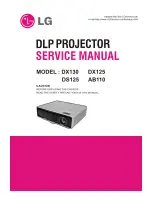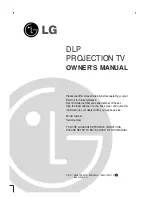
3
3.
General
Focusing &
Enlarging
The size and clarity
of your projected
image is determined
by the distance of
the projector from
the projection surface
and the focusing of
the lens. The farther
the projector is from
the work surface, the
larger your image will be. As you change distance,
you will have to slide the lens in or out slowly within
the lens barrel to focus the projected image. The
Super Prism includes two lenses; the Super Lens
(installed in the projector) and the Prism Lens. The
Super Lens is a precision 3-element color-corrected
lens which provides an enlargement range from
200% (2x) up to 2000% (20x). The additional Prism
Lens is designed to provide image reduction to 80%
(4/5x). Please Note: A gap exists in the projection
range that cannot be achieved due to the reversing
of the lens –170% to 250%. You will have to adjust
the size of your original to achieve a size in this range.
Super Lens Distance Chart
(approximate) – Measured from label above lens to
projection surface.
Prism Lens Distance Chart
(approximate) – Measured from label above lens to
projection surface.
4. Copy Area
The copy area is 7” x 7”. This indicates the
maximum size of copy the lens can see. This copy
size, however, varies with the desired projection
size. With greater enlargement, the lens sees less
of the copy area.
5. Photograph Projection
(Use Caution!)
Photographs are commonly used in projectors;
however, a few precautions must be taken:
1. Work from a copy of any valuable or important
photographs. Never use an original if it cannot
be replaced. Photographs were not intended to
handle the intense light and heat created by a
projector. Though this projector is fan-cooled and
ventilated to keep the copy cooler, it does get hot
and photographs may be adversely affected by
the heat and light.
2. Never project old photographs as they are
particularly sensitive to heat and light and they will
be damaged. Again, have a copy made.
3. To prevent photographs from curling, mount
them to a stiff backing material or put them in a
picture mat.
4. When projecting, make sure that the fan is
operating and that the cooling vents have not
been obstructed. When fi nished tracing the
projected photo, turn the projector off and
remove photo.
Tips & Techniques
Oversized Copy/Books
If your original is larger than what will fi t onto the
copy area, or if you are working from a picture in a
book, simply remove the lid from the projector by
pulling up the cover carefully and removing the two
pivot pins. Place the copy or book on top of the
projector. The lens will still only see a 7” x 7” portion
of this copy, but placing it on top will allow you to
move it around and project it in sections. Once you
have drawn a section, move the copy and realign the
projected image to the stopping point of the traced
area. Resume tracing and repeat as many times as
necessary. The other alternative to oversized copy
is to reduce the original on a copier, so that it fi ts
within the 7” x 7” copy area. Another way to make
use of oversized copy that is not manageable on
top of the projector is to place the copy face-up on
your tabletop, remove the projector lid and place the
projector upside down and on top of the copy. This
way the copy will remain rigid and your projected
image is more likely to line up properly.
Small 3-D Objects
Small 3-D objects can be projected by removing
the projector lid and placing the object on top of
the projector copy area. To ensure maximum image
clarity, place a box over the top of the object to
eliminate ambient light (light escaping from the top
of the projector). To project 3-D objects which are
larger than the 7” x 7” copy area, take a photograph
of the object and project the print.
CAUTION: Do not mount aerosol cans or
pressurized objects onto the projector. The hot
surface may cause them to burst.
Range
2x
5x
10x
20x
Distance
32” 57”
8.6’
16.5’
(81.3cm)
(1.4m)
(2.6m)
(5m)
Range
.8
1x
5x
10x
20x
Distance
24”
23” 47”
89”
14’
(61cm) (58m)
(1.2m) (2.3m) (4.3m)
Lens in reduction
position
Lens in enlargement
position




































